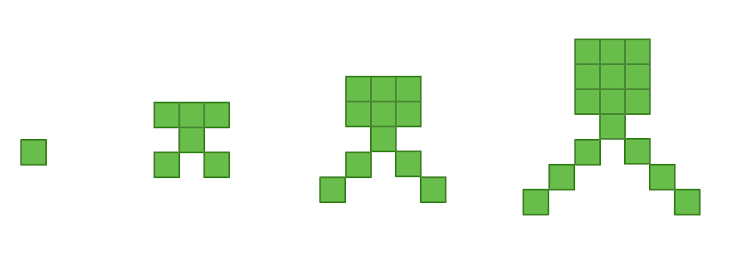These resources will be removed by end of Summer Term 2025.
Switch to our new teaching resources now - designed by teachers and leading subject experts, and tested in classrooms.
These resources were created for remote use during the pandemic and are not designed for classroom teaching.
Lesson details
Key learning points
- In this lesson we will learn how to find the term-to-term rule for a sequence.
Licence
This content is made available by Oak National Academy Limited and its partners and licensed under Oak’s terms & conditions (Collection 1), except where otherwise stated.
5 Questions
Q1.
Which definition best describes an arithmetic sequence?
A sequence that goes up by 2 each time.
A sequence where we can easily find the nth term.
A sequence where we cannot find the nth term.
Q2.
Which of the following is NOT an arithmetic sequence?
-2n - 4
-3, -1, 1, 3, 5, ...
0.5, 1.5, 2.5, 3.5, 4.5, ...
Q3.
Which of the following statements is true?
Arithmetic sequences cannot have decimal numbers in them.
Arithmetic sequences cannot have negative numbers in them.
It is impossible to find the nth term of a sequence that isn't arithmetic.
Q4.
How many squares does the next term in this sequence have?

16
19
26
Q5.
What is the nth term of the sequence in the image?
4n - 3
5n - 3
n + 5
5 Questions
Q1.
Which best describes the term-to-term rule?
A rule which connects the position number to each term.
A rule which gives us the nth term in the sequence.
A rule which tells us the first term.
Q2.
Which sequences starts at 2 and has a term-term-term rule of multiply by 3?
2, 4, 6, 8, 10, ...
2, 5, 8, 11, 14, ...
3, 6, 12, 24, 48, ...
Q3.
Which sequence starts at -1 and has a term-to-term rule of multiply by -4?
-1, -4, -16, -64, -256, ...
-1, -5, -9 -13, -17, ...
1, -4, 16, -64, 256, ...
Q4.
What is the term-to-term rule of the sequence 60, 30, 15, 7.5, 3.75, ...?
Multiply the current term by -2.
Multiply the current term by 2.
Subtract 30 from the current term.
Q5.
What is the term-to-term rule of the sequence -2, 4, 16, 256, ...?
Add 6 to the current term.
Multiply the current term by -2.
Multiply the current term by 2.

